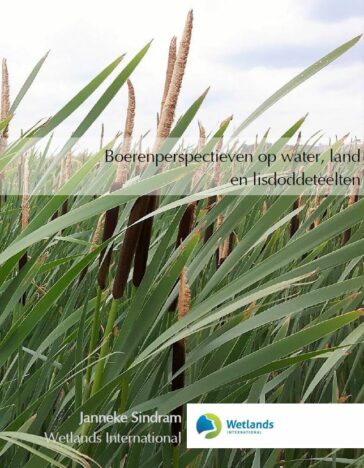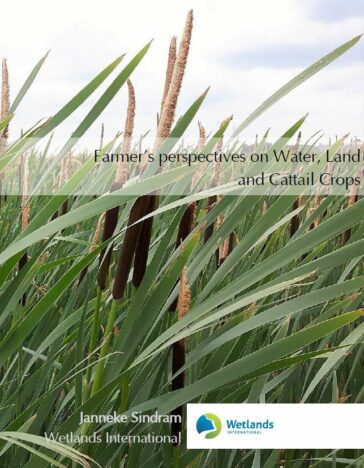
Farmers’ Perspectives on Water, Land and Cattail Crops
The soil of extensive Dutch peatlands in the western and northern parts of the country is subsiding because of drainage. This leads not only to the soil surface descending, but also to emissions of carbon dioxide, drainage of wet nature areas and increased flooding risks. Alternative land uses that allow high groundwater tables can be a powerful measure to prevent the subsiding and paludiculture, or wet farming, is proposed as such an alternative land use.
Farmers can (partly) switch to this new and innovative method in order to keep their land profitable. Wetlands International hosts the project ‘Veenpower’ that aims to promote and facilitate paludiculture in the Dutch peatlands in order to reduce soil subsidence. Dairy farmers form the largest group of landowners in the area and are therefore the most important stakeholders. They decide on the introduction of paludiculture on their terrain. This report reflects and summarises the perspectives of Dutch peat-bound farmers. It includes eight recommendations for working with farmers. The report is in Dutch, there is also an English summary.
Header image by Nature Photos used under a CC BY 2.0 license


